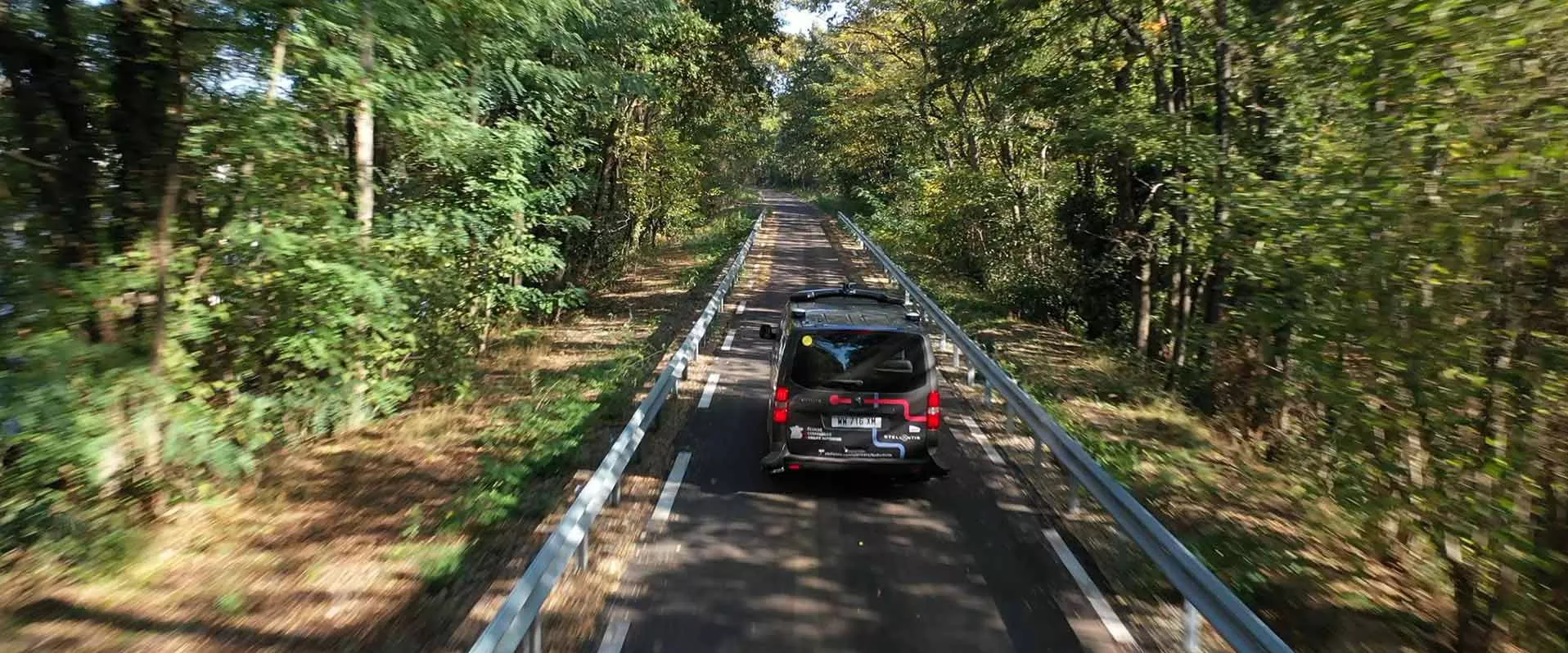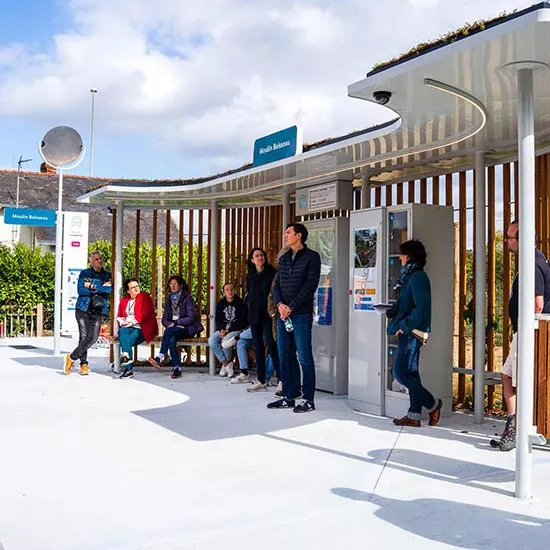
PIOMA—the autonomous vehicle test platform
Our PIOMA platform is the only one of its kind in France, and it’s a powerful asset in testing the technological building blocks for tomorrow’s mobilities. We’re using its versatile features and near-real conditions to develop new public transport offers with self-driving vehicles.
About PIOMA
PIOMA is our open innovation platform for autonomous mobility, built in 2020 on a disused rail line in Carquefou, a small town near Nantes in western France. Thanks to its private 4G and 5G telecommunications network, prototype passenger station, single-lane passing areas, and connected road intersection, PIOMA can test autonomous mobility technologies in near-real conditions. With our partner Stellantis, we used this cutting-edge facility for a 2-year trial of self-driving shuttles, with support from ADEME under the SAM1 consortium.
PIOMA: open-air laboratory
Origins
Our goal is to help develop an autonomous, dedicated-lane mobility system on disused rail lines, along greenways and on separate road corridors. These future public transport systems will offer an alternative to private cars in areas with little or no mass transit.
Unique in France
PIOMA’s infrastructure and 2 km of roadways make it an unparalleled location for trialling the full range of autonomous vehicles now being developed by multiple automakers, including the Stellantis shuttles tested at the site.
Why we chose Carquefou
We needed a dedicated site for our experiments, and the disused rail line in Carquefou was ideally positioned between residential and commercial areas. We also had support from the mayor and the local community.
Expanding public transport options
Autonomous mobility systems will enhance our offer and meet the needs of mobility authorities.
Protecting the environment
Forest cover can make it a challenge to receive telecommunications signals reception—a critical component of the PIOMA platform. Even so, we succeeded in preserving the trees and other plant life lining the test track.
Q&A with François Ramond
What sets PIOMA apart?
It’s a dedicated site where we can test autonomous vehicles (AVs) under near-real conditions at up to 50 km/h. That includes safely validating single-lane passing and AV behaviour at pedestrian crossings. A station prototype models passenger services, with special signage and bands of LED lights that flash on and off as shuttles arrive and depart. PIOMA also includes a road intersection—formerly a level crossing—with traffic lights that “talk” to vehicles and indicate the status of the intersection.
How do they communicate?
The vehicles talk to the connected traffic light using a local V2X (vehicle-to-everything)2 communication system. Our partner Ericsson has already installed antennas on PIOMA’s 2-km track to deploy a private 4G and 5G network. Information from connected infrastructure points rounds out data from onboard sensors, relaying information from the external environment. The aim is to test devices that can boost performance and traffic safety in multiple use cases.
Are users involved?
Yes. We need to know how acceptable autonomous mobility will be to future users. We’ve asked Carquefou residents to board the Stellantis shuttles operating at PIOMA, and they’ve also helped us test the dynamic signage system in the station and at the pedestrian crossing to ensure that it’s readable. Assuming that a person isn’t terribly familiar with this type of information, how easily will they understand the messages to cross or stand back?

How do they react?
Overall, user feedback is very positive. Most people say that they’d be happy to take this type of transport, especially to avoid driving.
What’s next?
We want to use PIOMA for our first operational service with passengers aboard. Several types and sizes of autonomous vehicle, made by different automakers, could link the residential areas of Carquefou to its commercial areas, schools and stadium. Our aim is to model deployment of a future autonomous public transport system.